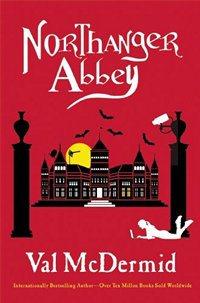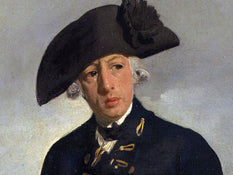Governor Phillip meets Jane Austen
By Heather Clarke
Did Governor Phillip meet Jane Austen in Bath? It is quite possible.

Arthur Phillip retired to Bath in 1793 to recover his health after five years as the governor of the colony of New South Wales. While on occasions he was obliged to live elsewhere, the elegant city of Bath continued to be his favoured place of residence for the rest his life. Jane Austen first visited Bath in 1797 and dwelt there with her family between 1801 and 1806.
Bath was at the cultural heart of Georgian and Regency society. The most fashionable people flocked to Bath in the season to enjoy the curative powers of the mineral waters and to consort with the fine company gathered there. Central to this were the splendid Assembly Rooms, “the most noble and elegant of any in the kingdom”2. Together with card-playing and concert-going, dancing was a key element to the experience. Dances were held every night, with at least two balls given each week during the season.
These enchanting affairs were presided over by a master of ceremonies with the strictest decorum; however, the dances themselves encouraged a certain degree of flirtation. Balls began with minuets, followed by country dances, cotillions and reels. Both Governor Phillip and Jane Austen are known to have attended balls – did their paths cross? They certainly would have danced the same fashionable dances of the season. Every year collections of the latest dances were published; these invariably bore the inscription As they are performed at Court, Bath, and all Public Assemblies, highlighting the pre-eminence of Bath and the significance of dance in genteel society.

Jane, aged 21, visited Bath for the first time in 1797. She may have danced Captain Cook’s Country Dance from Corri, Dussek & Co’s.
Comparing the lives and places Arthur and Jane frequented, it is clear they both trod in the same places, moved in similar circles and perhaps had a number of mutual acquaintances. Although Phillip was mostly not a permanent resident in Bath at the same time as Jane (1801-1806), he did spend a considerable amount of time there and upon retiring in 1805 purchased “a large and commodious house at No 19 Bennett Street”. As befitted a person of Phillip’s standing, this was situated in one of the most prestigious areas of the city, a handsome new Georgian dwelling, just above the Assembly Rooms.

Jane Austen and Arthur Phillip also had connections with the Royal Navy in common. Two of Jane’s older brothers, Francis3 and Charles4, joined the navy. While they were considerably younger than Phillip it is quite possible that, as young sea-faring gentlemen, they moved in similar social circles. In 1798 Phillip became the commander of the Hampshire Sea Fencibles5, stationed at Lymington6, a port close to Southampton. From 1801, he was promoted to be the Inspector of the Sea Fencible Service throughout England and Scotland. As such, he almost certainly met Jane’s brother, Francis, who raised and commanded the Sea Fencibles on the Kentish coast between 1798 and 1804. 
In 1810, Charles Austen was promoted to captain of HMS Swiftsure – the same vessel Phillip had commanded in 1798. Like Phillip, both Austen brothers eventually became admirals. On a trivial note, it is interesting that Jane has a Mr Wentworth, Mr Darcy and a Captain Hunter as characters in her novels – was she drawing on prominent early Australians for inspiration? So did Admiral Arthur Phillip meet Jane Austen? There is a strong circumstantial likelihood that they had a mutual brush with fame. Perhaps they even touched when giving hands in the dance.
Map of Bath.
Showing homes and important places for Jane Austen and Admiral Arthur Phillip. Phillip’s first residence in South Parade where he recovered his health after establishing the Colony of New South Wales. The Pump Rooms where the curative powers of the mineral waters helped restore Phillip’s health. Jane Austen’s home at 25 Gay Street. The Assembly Rooms: site of dances, balls and concerts. Phillip’s home in 19 Bennett Street. ________________________________________________________________________
Phillip’s first residence in South Parade where he recovered his health after establishing the Colony of New South Wales. The Pump Rooms where the curative powers of the mineral waters helped restore Phillip’s health. Jane Austen’s home at 25 Gay Street. The Assembly Rooms: site of dances, balls and concerts. Phillip’s home in 19 Bennett Street. ________________________________________________________________________
Dance historian Heather Clarke's innovative approach to research is attracting the attention of dancers, historians and musicians alike. She specialises in dances of the period 1770 to 1840 which includes those popular in Jane Austen's day and the extended Regency. Heather has performed on stage and screen, and now concentrates on researching and promoting early Australian dance. She regularly publishes her latest research at www.colonialdance.com.au
Sources
1 Portrait of Captain Arthur Phillip, 1786 painted by Francis Wheatley (1747-1801) State Library of New South Wales. ML 124 http://trove.nla.gov.au/version/14288959 Phillip, Arthur (1738–1814) biography by B. H. Fletcher. Australian Dictionary of Biography, Volume 2, 1967 http://adb.anu.edu.au/biography/phillip-arthur-2549 2 Bath Assembly Rooms. When completed in 1771, they were described as ‘the most noble and elegant of any in the kingdom’. http://www.nationaltrust.org.uk/bath-assembly-rooms/ 3 Sir Francis William Austen, GCB (23 April 1774 – 10 August 1865) http://en.wikipedia.org/wiki/Francis_Austen 4 Rear Admiral Charles John Austen CB (23 June 1779 – 7 October 1852) http://en.wikipedia.org/wiki/Charles_Austen 5 Sea Fencibles (1798-1802 and 1803-1810) were volunteers, usually fishermen or local residents, commanded by serving or retired naval officers – in the event of an alarm, the men would make to a rendevous point and proceed to patrol a specific length of coast. They would also assist with coastal signal stations and would man small boats. http://www.rmg.co.uk/explore/sea-and-ships/facts/faqs/who-were-the-sea-fencibles 6 Lymington. A beautiful, Georgian market town, situated on the southern edge of the New Forest, it also had the conveniences of Assembly rooms, circulating library, and theatre.Bibliography
Falbe, Jane de. My dear Miss Macarthur : the recollections of Emmeline Maria Macarthur (1828-1911). Kenthurst [N.S.W.] : Kangaroo Press, 1988. Fullerton, Susannah. A Dance with Jane Austen : how a novelist and her characters went to the ball. London : Frances Lincoln, 2012. Pembroke, Michael Andrew. Arthur Phillip : sailor, mercenary, governor, spy. Richmond, Victoria Hardie Grant Books, 2013.Links
The Britain-Australia Society. Admiral Arthur Phillip RN Commemoration. http://britain-australia.org.uk/about/admiral-arthur-phillip
Jane Austen Society of Australia http://jasa.com.au/
________________________________________________________________________ The article about Governor Phillip and Jane Austen was written by Heather Clarke and appeared on her website www.colonialdance.com.au . It is used here with permission.


